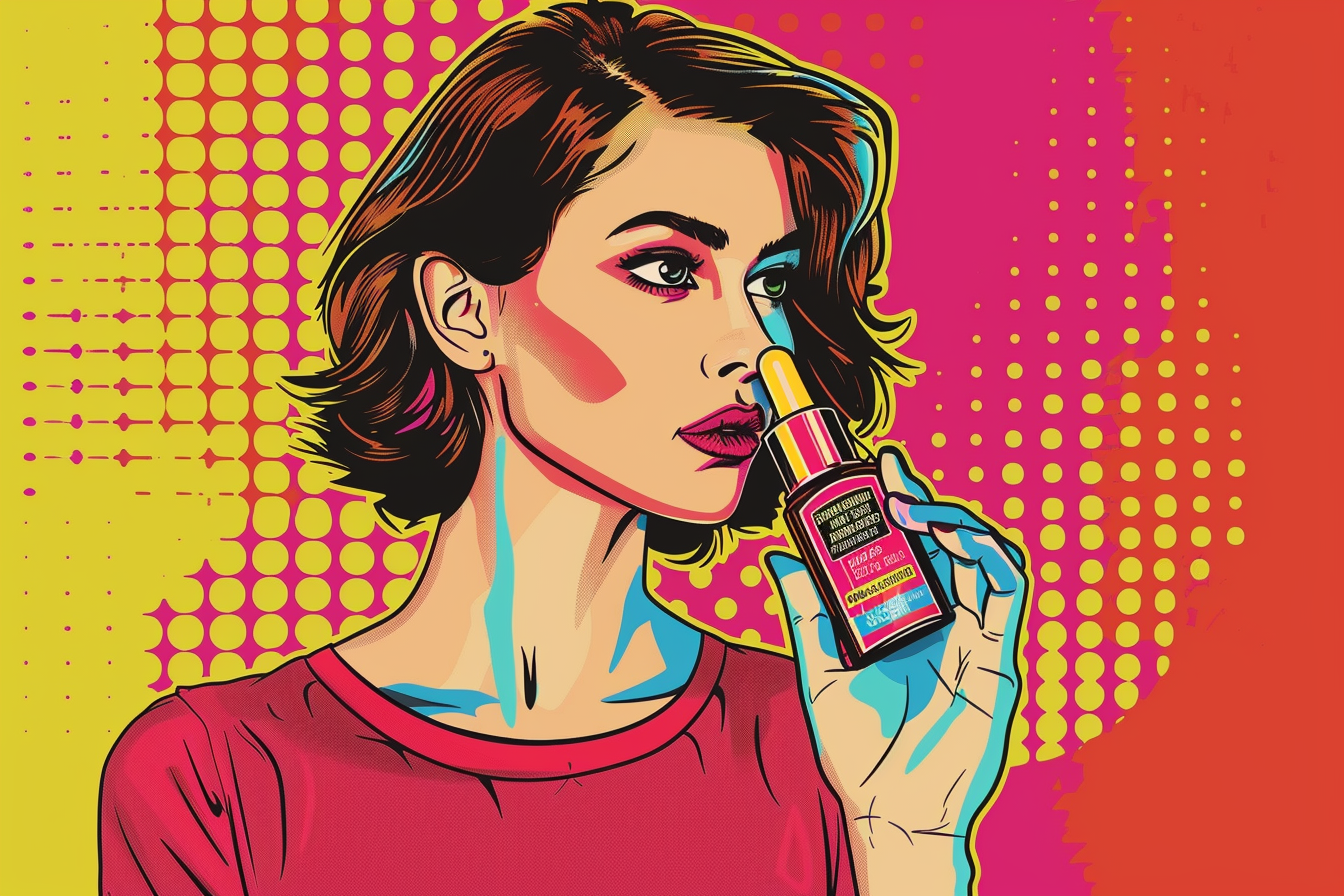
For centuries, we’ve tried just about everything to achieve that radiant, healthy glow, from essential oils straight from the Earth to the most advanced serums scientists could come up with.
But as it turns out, the key ingredient to lasting, naturally beautiful and healthy skin was right in front of our faces the whole time.
You may not be aware of it, but your skin actually has its own microbiome, a vast ecosystem of bacteria that exists not only on the surface of your skin but also deep within the dermal layers, playing a crucial role in just about every facet of your complexion.
Where Does the Skin Microbiome Come From?
To get you up to speed on the origins of this unique collection of bacteria, it’s important to know that your skin microbiome starts growing at birth.
That’s right, you receive the majority of your good microbes (for both your skin and your gut) from your mother and environment around the time you are born. This is one reason why so many hospitals and midwives are prioritizing skin-to-skin contact and breastfeeding for new mothers––this combination is like a magic, bacterial potion for building a baby’s natural immunity via the mother’s skin and bodily microbes.
The Role of the Skin Microbiome Goes Far Beyond Your Appearance
Despite the name, this microbiome doesn’t just exist on the surface of your skin: it reaches as far as the subcutaneous fat layer, signaling an inherent connection and even communication with your immune system. While the majority of your immune system is housed in the gut, it’s highly mobile and immune cells interact with the bacteria on your skin.
So, it makes sense that optimal health for your skin all hangs within a delicate balance of the communities of microbes living in and on your skin. In fact, your skin generally hosts more than 1,000 species of bacteria in any one spot!1
And, like the good bacteria found in the other microbiomes of your body, the flora found on your skin are designed to protect you from unwanted irritants and invaders that can cause breakouts, fine lines, and other issues.
But when your skin microbiome is populated with plenty of good bacteria, a notion called competitive exclusion kicks in and it becomes harder for unwanted microbes to stick around. They simply become crowded out by the good bacteria in the microbiome.
The math goes something like this:
Balanced skin microbiome = healthy immune response = naturally healthy-looking skin.
It makes sense if you think about it: if your microbiome is out of balance, the bad guys crash the party and your immune system tends to flare up. Alternatively, when balance exists within the microbial ecosystem of the skin, a more even, healthy complexion is reflected back to you.
Repopulate Your Good Bacteria for a Healthy Glow
When you review the list of all the things that your beneficial bacteria can do for your skin, it almost sounds like you’re reading an ad for one of those expensive skin creams.
For instance, you might have heard of hyaluronic acid: it’s an ingredient that’s commonly used in skincare to increase the moisture and plumpness of skin. But you don’t need to get your hyaluronic acid in a cream—certain types of probiotic bacteria actually produce it.2
The same goes for ceramide. This family of fatty substances strengthens your skin barrier and helps the collagen in your skin retain its structure so your skin stays firm. It’s commonly included in pricey skincare products, but research has shown that putting certain probiotics on your skin actually increases your ceramide levels naturally while also decreasing your chances of blemishes.3
And the list of what good bacteria can do for your skin goes on…
• They help to mitigate the signs of aging caused by exposure to UV rays.4
• They maintain the pH of your skin, which ensures proper moisture levels while discouraging the growth of inhospitable bacteria.5
• They even boost your overall immune function and protect you from many of the substances that can negatively impact your health by maintaining an army of lymphocytes (a type of immune cell) on your skin!6
It’s really hard to overstate just how great an impact your skin microbiome can have on your health.
Unfortunately, our closest friends (aka our good bacteria) are under constant attack.
Over the past century or so, our lifestyles have changed dramatically. Not only are our diets lower in nutrition and fiber than they used to be (thanks to the rise of the Industrial Revolution), but for decades we’ve used beauty and hygiene products that we now know contain ingredients shown to destroy the good bacteria we need to maintain healthy skin.
One particularly damaging trend is the modern Western obsession with cleanliness and the overuse of antibiotics.
What we now think of as "normal" levels of hygiene are actually pretty over-the-top when taken in the context of our history as a species. When we use things like harsh chemical cleaners, soaps, or deodorants, we wipe out the good bacteria along with the bad, throw off the pH of the skin, and create conditions where inhospitable bacteria can thrive. The result? We experience the negative health changes that come with an imbalance of bacteria, including increased changes in hair growth, changes in the appearance of skin, and even increased immune sensitivity.
This Matters Even More When You Consider the Skin-Gut Connection.
Your gut microbiome is the foundation of good health and proper functioning throughout the rest of your body. In fact, the gut, brain, and skin have a special connection via what’s called the gut-brain-skin axis, through which they communicate and affect each other.7 This means that over-enthusiastic cleaning practices aren’t only going to have an effect on your skin––through your gut—they could also have an affect on your mood, the way your body holds onto weight, or even your likelihood of getting seasonal sniffles.8,9
The Keys to a Healthy Skin Microbiome
Given that it’s such a huge player in your health and appearance, it’s well worth your while to keep your skin microbiome at the forefront of your mind when it comes to self-care.
The good news is that simple shifts can make a big difference in maintaining your beneficial microbes.
Get outside as much as you can.
One of the fastest ways to change up your skin microbiome is to spend time outside. Ideally, look for situations where you’ll get dirty or be around animals, but even a simple walk through the park will expose you to new types of bacteria, which can then transfer to your skin to replenish or diversify your microbiome. (Not to mention that you’ll also enjoy all the other benefits of being in nature, like lower stress levels, healthier blood pressure levels, and better heart health.)
Relax.
Your body doesn’t do well under prolonged stress, and your skin is no exception.10 Do what you can to manage your stress levels so your bacteria can really flourish. Some great ways to start include limiting your screen time, starting a meditation or gratitude practice, and avoiding foods that tend to increase feelings of stress, like those containing caffeine or sugar.
Embrace the skin you’re in.
We tend to get into our health and beauty routines pretty early on in life, meaning that we might not know whether they’re really right for our skin or not. Try giving your skin a break from your normal facial regimen, and you might be surprised at just how well it gets along without the products you normally put on it.
Clean out your cabinet.
Consider getting rid of any beauty products you have that contain ingredients that may potentially deplete good bacteria. It’s a good idea to steer clear of anything with “antibacterial” or “antimicrobial” on the label, as well as to avoid ingredients such as mineral oil, propylene glycol, petroleum and petroleum byproducts, and parabens. Even “natural” products might be harboring some unwanted ingredients, so make sure you read the labels!
Give your bacteria a boost, inside and out.
There are lots of things you can put on your skin to temporarily change its appearance, but for sustainable, natural health and beauty, you'll need to go deeper.11 Supporting your gut bacteria is the best place to start so make sure you’re taking an effective daily probiotic like PRO-15, drinking lots of water, eating plenty of organic, prebiotic-rich foods, spending time outside, and exercising regularly.
And, since your skin’s bacteria is so key to that radiant glow, you might want to give them additional support with probiotic-enhanced skincare products.
Whether it’s a delicious yogurt facial or a premium probiotic skincare regimen, harnessing the power of probiotics delivered directly to your skin can protect you from environmental irritants, soothe temporary inflammation you might be experiencing, and help bring your skin microbiome back into balance.
References:
1. Pennisi, E. 2008. Bacteria Are Picky About Their Homes on Human Skin. Science 320(5879). doi: 10.1126/science.320.5879.1001
2. Miyazaki, K., Hanamizu, T., Iizuka, R., Chiba, K. 2003. Bifidobacterium-fermented Soy Milk Extract Stimulates Hyaluronic Acid Production in Human Skin Cells and Hairless Mouse Skin. Skin Pharmacology and Physiology 16(2). doi: 69031.
3. Kober, M.M., Bowe, W.P. 2015. The Effects of Probiotics on Immune Regulation, Acne, and Photoaging. Women’s Dermatology 1(2). doi: 10.1016/j.ijwd.2015.02.001
4. Guéniche, A., Philippe, D., Philippe B., Blum, S., Buyukpamukcu, E., Castiel-Higounenc, I. 2009. Probiotics for Photoprotection. Dermatoendocrinology 1(5).
5. Schmid-Wendtner M.-H. · Korting H.C. 2006. The pH of the Skin Surface and Its Impact on the Barrier Function. Skin Pharmacology and Physiology 19(6). doi: 10.1159/000094670.
6. Streilein, J.W. (1983). Skin-associated Lymphoid Tissues (SALT): Origins and Functions. Journal of Investigative Dermatology 1983 Jun(80 Suppl:12s-16s).
7. Arck, P., Handjiski, B., Hagen, E., Pincus, M. . . . Paus, R. 2010. Is There a Gut-Brain-Skin Axis? Experimental Dermatology 19. doi: 10.1111/j.1600-0625.2009.01060.x
8. Musso, G., Gambino, R. Cassader, M. 2010. Obesity, Diabetes, and Gut Microbiota. Diabetes Care 2010 Oct; 33(10). doi: 10.2337/dc10-0556
9. Hesselmar B., Sjöberg, F., Saalman, R,. Aberg, N., Adlerberth, I., Wold, A.E. 2013. Pacifier Cleaning Practices and Risk of Allergy Development. Pediatrics. 2013 Jun;131(6) doi: 10.1542/peds.2012-3345.
10. Arck. P.C., Slominski, A., Theoharides, T., Peters, E.M.J., Paus, R. 2006. Neuroimmunology of Stress: Skin Takes Center Stage. Journal of Investigative Dermatology 126(8). doi: 10.1038/sj.jid.5700104.
11. Krutmann, J. 2009. Pre- and Probiotics for Human Skin. Journal of Dermatological Science 54(1). doi: 10.1016/j.jdermsci.2009.01.002










